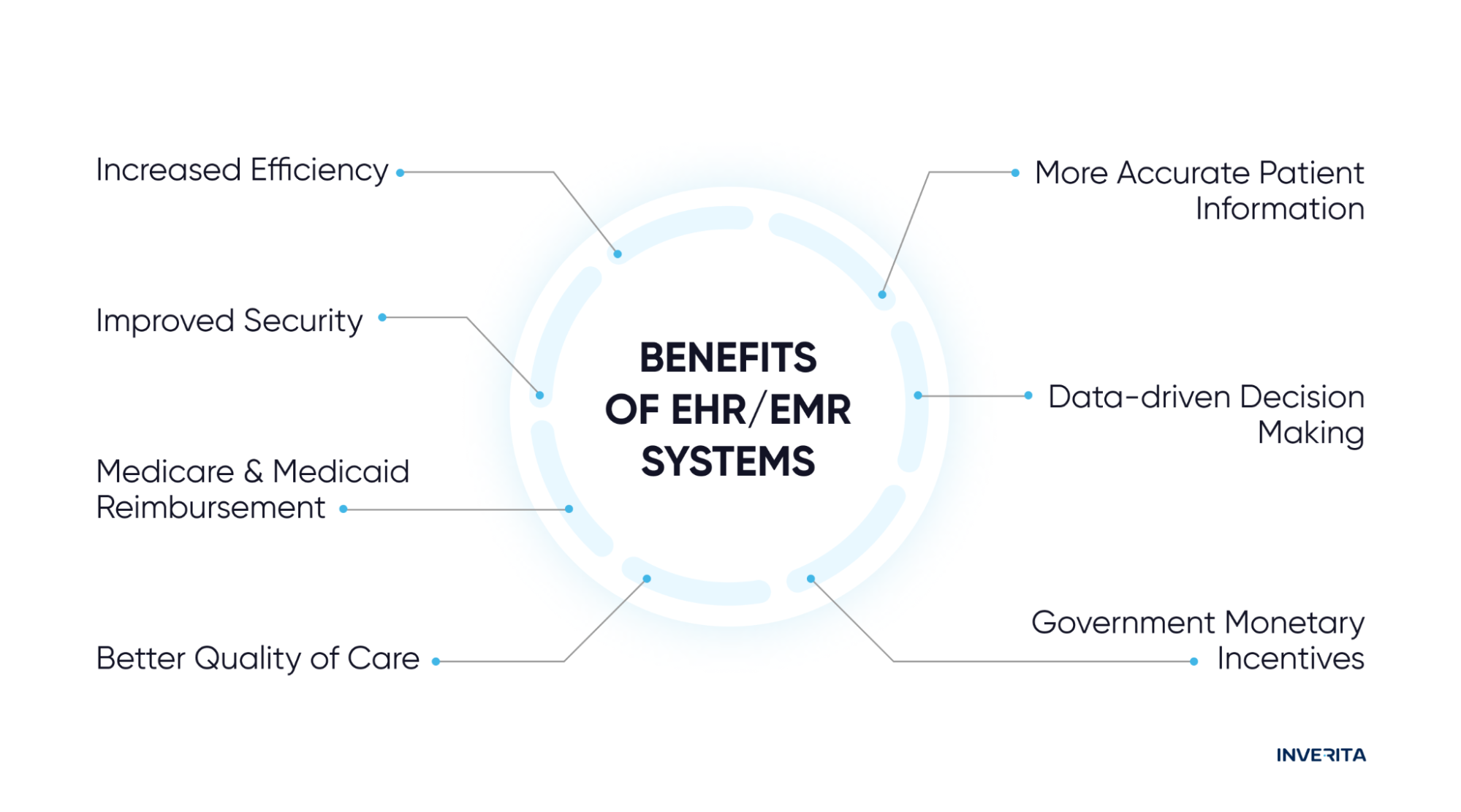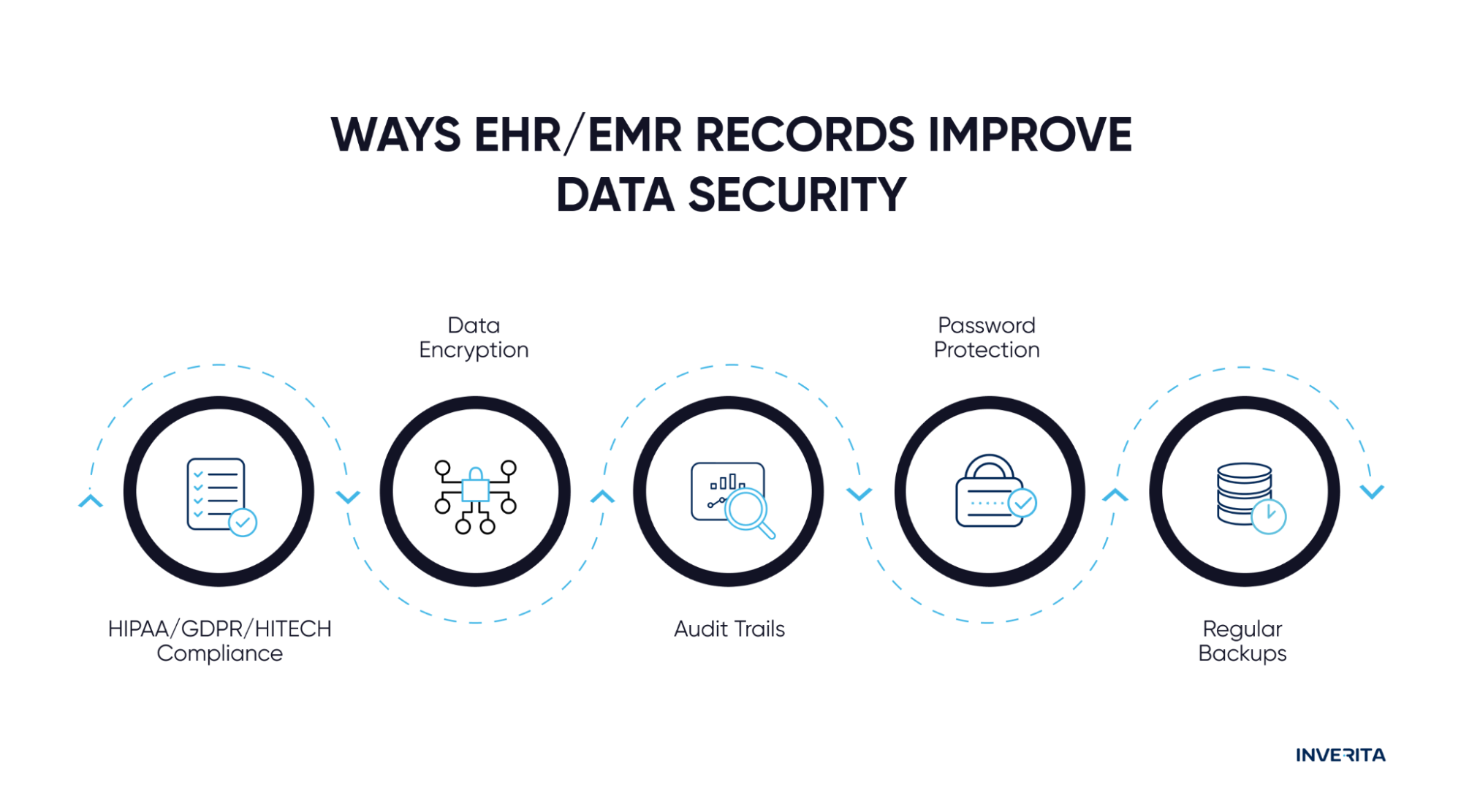#1 Paperless Health Records Save Administrative Staff Time
Paper patient records have outlived their usefulness. One of the best ways to increase medical practice revenue is to substitute paper patient data with EMR paperless. First of all, it cuts down on the amount of time your employees spend on documentation, as a result, you decrease salary expenses. Secondly, your practice can save thousands of dollars annually on office supply expenses, cutting out expenses for physical file storage requirements and transcription costs.
#2 Increased Efficiency
Time is money. Electronic healthcare records boost profitability simply by automating all kinds of monotonous repetitive tasks. They eliminate the risk of illegible handwriting in notes or prescriptions which often lead to errors. Automatic reminders send patients notifications about their upcoming visits or regular checkups.
E-prescribing has already become standard for many healthcare providers. EHR can check for any allergies that may occur based on the current patient’s diagnosis and the medication they take. Moreover, prescribing through EHR reduces abuse and addiction rates.
Artificial intelligence assists doctors with interpreting historical records and diagnostics.
Continuous collection of data allows to personalize care and empowers health providers to address issues in a preventative manner.
#3 Governments Provide Monetary Incentives for Practices that Use EHR/EMR Technology
Medicare EHR incentive program gives healthcare providers an opportunity to be rewarded for implementing electronic health records into their practice. Organizations can get tens of thousands of dollars if they use a certified solution that meets use standards. It’s worth mentioning that penalties for not meeting these standards can be as high as a reward from medicare EHR incentive program, so make sure you choose a healthcare provider that helps you comply with all industry standards.
#4 Medicare & Medicaid Reimbursement
It’s not a secret that healthcare reimbursement is a long and complicated process. Some independent clinicians simply choose not to accept insurance, though others, more technically-savvy providers understand that they can earn more healthcare reimbursement if they provide high-quality and low-cost care compared to their competitors.
What’s more, hospitals can maximize behavioral health revenue by integrating it with physical health care. Through using EHR/EMR system providers can easily capture, analyze, and generate reports showing the positive dynamics of their patients. Private and government insurance providers are hungry to work with practices that can show positive outcomes.
#5 More Accurate Patient Information & Better Quality of Care
Physicians can easily store and access patients’ data. Contrary to a paper workflow, this completely eliminates the risk of theft, damage, misplacement, or distortion of sensitive personal data. The information can be updated in real-time, connecting every physician in the process of treatment.
Consider, for example, Mike, a patient with diabetes. Mike had an appointment with his doctor in February. Before the appointment, he had his cholesterol checked at a lab affiliated with his doctor’s office. Then in March, he visited an eye doctor to check if diabetes affected his vision. In April, he went to a pharmacy to refill his insulin prescription. All this data can be stored and shared in real-time boosting the efficiency of treatment, saving physicians time, and improving patient satisfaction.
#6 Improved Security
Increasing medical practice revenue also means not getting into trials because of the violation of security standards or the software being not compliant with HIPAA, GDPR, etc. One of the benefits of EHR/EMR systems is that they make sure your app is fully compliant with industry and government regulations. What is more, they use blockchain technology and data tokenization so that patient and clinical data are stored securely, eliminating the possibility of loss or leakage.








